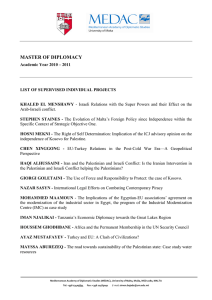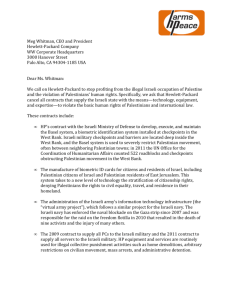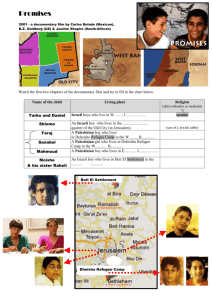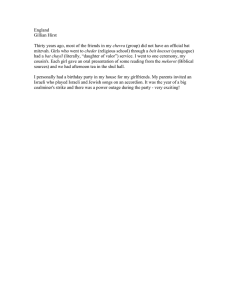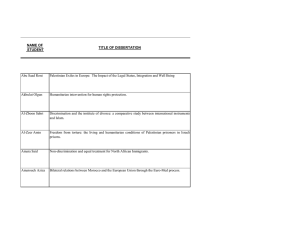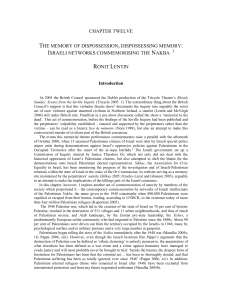Spacio-cide: State of Exception in the Israeli Colonial practices.
advertisement
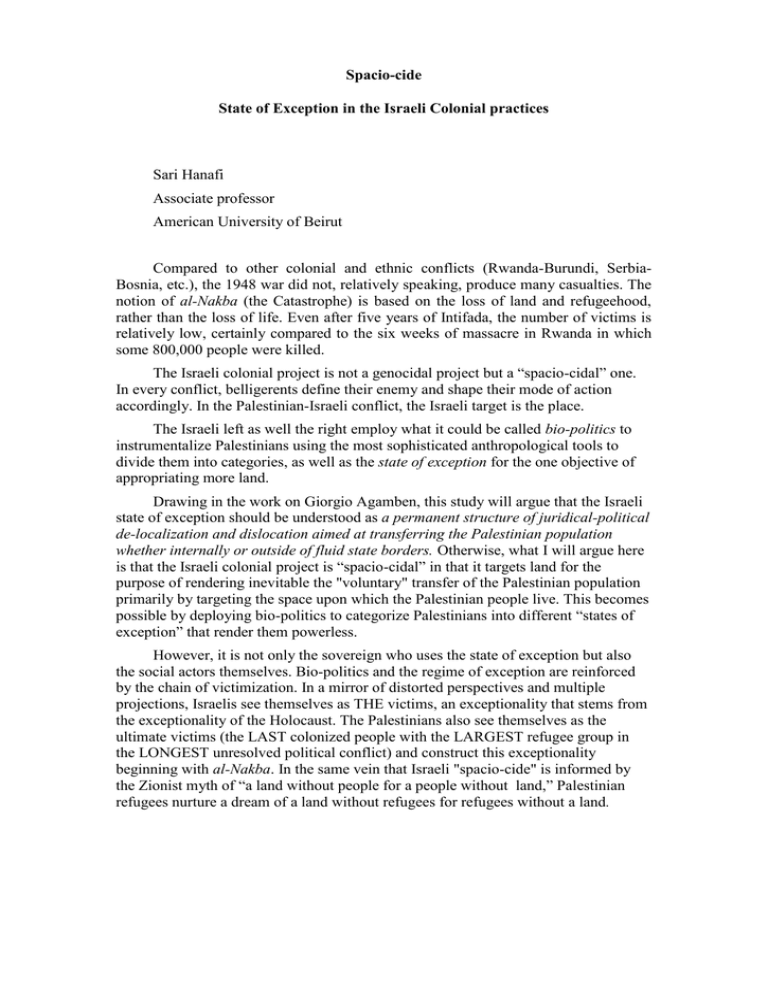
Spacio-cide State of Exception in the Israeli Colonial practices Sari Hanafi Associate professor American University of Beirut Compared to other colonial and ethnic conflicts (Rwanda-Burundi, SerbiaBosnia, etc.), the 1948 war did not, relatively speaking, produce many casualties. The notion of al-Nakba (the Catastrophe) is based on the loss of land and refugeehood, rather than the loss of life. Even after five years of Intifada, the number of victims is relatively low, certainly compared to the six weeks of massacre in Rwanda in which some 800,000 people were killed. The Israeli colonial project is not a genocidal project but a “spacio-cidal” one. In every conflict, belligerents define their enemy and shape their mode of action accordingly. In the Palestinian-Israeli conflict, the Israeli target is the place. The Israeli left as well the right employ what it could be called bio-politics to instrumentalize Palestinians using the most sophisticated anthropological tools to divide them into categories, as well as the state of exception for the one objective of appropriating more land. Drawing in the work on Giorgio Agamben, this study will argue that the Israeli state of exception should be understood as a permanent structure of juridical-political de-localization and dislocation aimed at transferring the Palestinian population whether internally or outside of fluid state borders. Otherwise, what I will argue here is that the Israeli colonial project is “spacio-cidal” in that it targets land for the purpose of rendering inevitable the "voluntary" transfer of the Palestinian population primarily by targeting the space upon which the Palestinian people live. This becomes possible by deploying bio-politics to categorize Palestinians into different “states of exception” that render them powerless. However, it is not only the sovereign who uses the state of exception but also the social actors themselves. Bio-politics and the regime of exception are reinforced by the chain of victimization. In a mirror of distorted perspectives and multiple projections, Israelis see themselves as THE victims, an exceptionality that stems from the exceptionality of the Holocaust. The Palestinians also see themselves as the ultimate victims (the LAST colonized people with the LARGEST refugee group in the LONGEST unresolved political conflict) and construct this exceptionality beginning with al-Nakba. In the same vein that Israeli "spacio-cide" is informed by the Zionist myth of “a land without people for a people without land,” Palestinian refugees nurture a dream of a land without refugees for refugees without a land.

